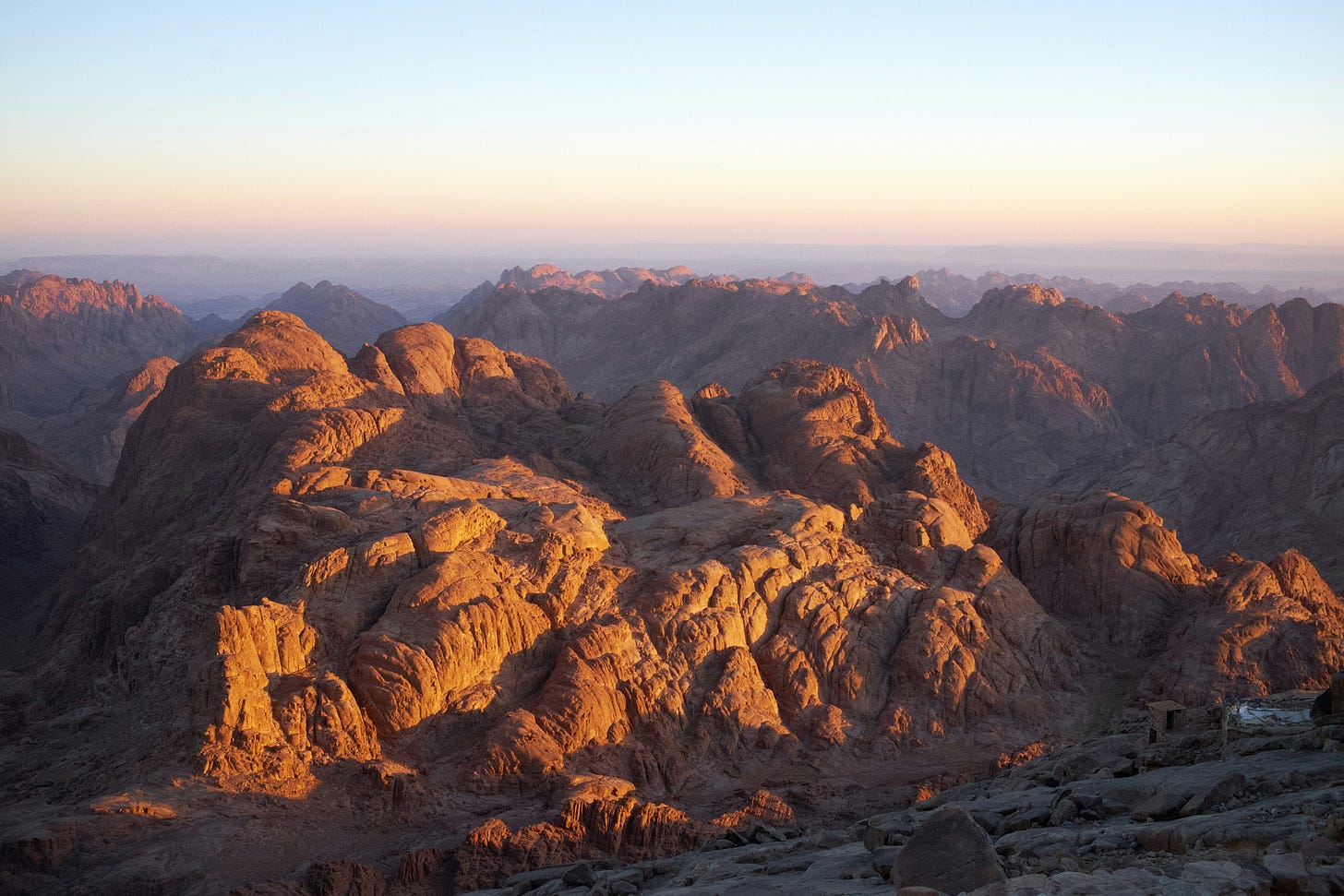A Sacred Ache: Finding Awe in the Desert's Silence
The narrow traverse between terror and transcendence
Photo by Artem Labunsky on Unsplash
The first time I felt fear shape shift into awe I was seventeen. It happened in the Sinai Desert, an arid and barren expanse, with Bedouin encampments along the distant horizon. The ominous mountain ranges were towering boulders, teetering with reckless solitude, warning any traveler crazed to enter.
I had never been to a place so vast and isolated. I grew up in Northeast Philadelphia, in a neighborhood of endless rowhouses, cement, lots of cement, asphalt streets and few, very few trees. Our rowhouse continuously hummed with the radio or the television. The sounds of our neighbors’ loud lives, muffled behind the party wall. I had no idea there were silent places, let alone how such space is cracked with both terror and transcendence.
We traveled through the desert by flatbed truck, clinging to wooden benches with our rucksacks squeezed between us. Canvas tarps attached to the sides of the truck, served as meager cover from the blistering sun and swells of dirt and dust. The road was little more than a pass of crushed rocks. For hours, we bounced and swerved in our caravan, singing our way toward the base of Mount Sinai and the Saint Katrina Monastery.
By the time we arrived, nearly dusk, my bones ached and my skin glowed oven-baked desert dust. Climbing from the truck, my legs were weak and shaking. My ears rang. My eyes pulling hot into the back of my head. Vertigo and thirst confused my senses as if to alert me—You are going to die in this place. Didn’t you know that?
My body sent frenzied signals—
‘You are not safe here. You are really not safe and don’t fall. Don’t get lost. Say something! Don’t say something. Don’t faint. Don’t vomit. You want to vomit. Do not vomit!’
Was it thirst triggering my plunge into an ancient fear spiral? Was the fear confusing the unknown with death?
A Kabbalist might illuminate this confusion with a poetic metaphor: this is the liminal space, between the inhale and the exhale of a single breath; it is a fluttering gossamer. When the sheath stills, when the exhale arrives, you are invited into Hibbut Ha-Kever—pangs of the grave. But at that moment, when our small group of American teenagers began our ascent, the shear fear of falling heralded my every step. Climbing the switchback trails of Mount Sinai under the light of the moon, without lanterns, I experienced something completely unknown to me, something that has become a lifelong refuge:
That pang wasn’t a call to death. It was a rhythmic, gentle pulse. It was warm and kind. It was my first experience with a sacred ache. Almost fifty years later, I have memorized that flutter as my introduction to awe. I know it now as the narrow traverse between terror and transcendence and an invitation to keep going and begin again.




Your description is stunning, real, visceral. Thank you for taking me there to that liminal place between the flat plane of my fear and the infinite space of the sacred.
This is stunning writing, wonderfully paced. I too can feel that flutter of awe, the wisdom of that liminal space.